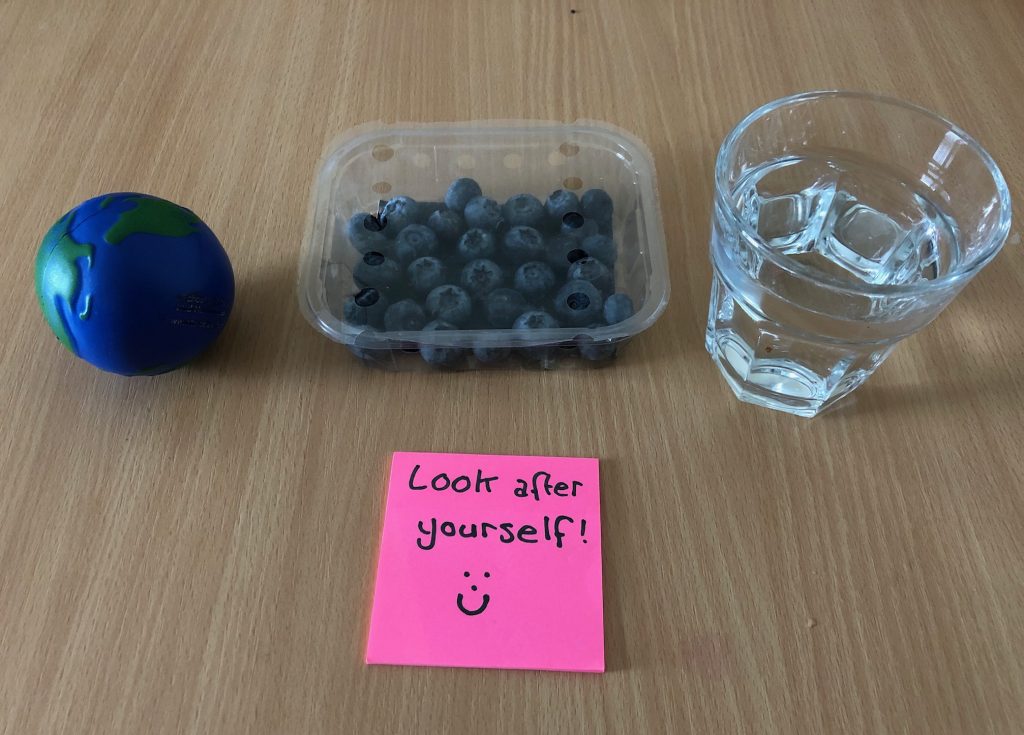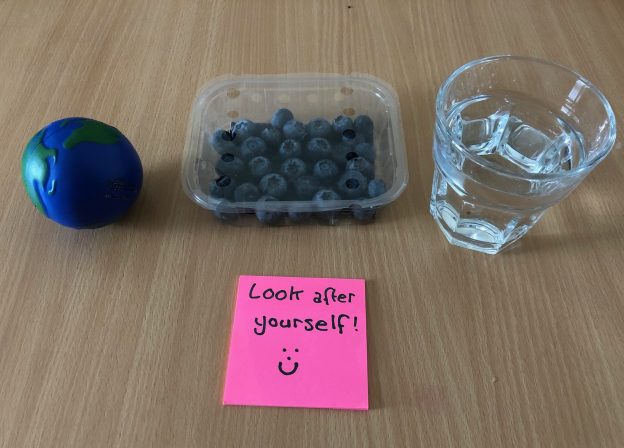We all know that looking after ourselves is important. How many times do we say “look after yourself” as a farewell to a friend, without really thinking about it?
Yet, if it’s so important, why do we need to be reminded to do it? It should be part of our everyday behaviours, shouldn’t it?
For me (like many others) knowing what to do to look after yourself is not necessarily the issue – finding the time to ensure I practice good habits regularly to promote my wellbeing is. Whether it’s having a stretch, taking a break, checking in with a friend or any of the other things we do in our daily lives to make us feel better, they can all get pushed to the back of the queue in favour of more (perceivably) pressing demands.
Jisc’s revised definition of digital wellbeing
Recently Jisc has revised its definition of digital wellbeing. This got me thinking about my own digital wellbeing. What approaches do I take to make the most of digital and to mitigate some of the more unproductive factors?
Jisc’s definition is informed by the broader issues around wellbeing and makes reference to looking after “personal health, safety, relationships and work-life balance in digital settings” [my highlight]. The distinction between “digital settings” and other settings is worth noting. Wellbeing may not always be digital-related, but the two often interrelate.
For many of us that work in education spending time in front of a computer is part and parcel of the job and is likely to be our ‘digital setting’. However, a digital setting could just as easily involve using mobile technologies such as a smart phone/tablet, immersing oneself in virtual environments or even using drones out in the field.
Digital is pervasive in education. More so for some roles than others, perhaps, but it’s difficult to think of a role that isn’t impacted by some kind of “digital setting.”
Jisc’s revised definition also stresses the importance of “understanding and identifying the positive and negative impacts of engaging with digital activities and being aware of ways to manage and control these to improve wellbeing.”
There’s a plethora of work being carried out across the sector to raise awareness about these ‘positive and negative’ aspects. MmIT (the CILIP special interest group) recently ran a #MindfulTech19 event with lots of ideas and resources. There’s also work being carried out by Staffordshire University around useful apps and online courses for learners on OpenLearn at The Open University to name a couple. Jisc also has wellbeing on the agenda at the next Experts Group meeting in Birmingham.
Three things

Let’s take a look at the most common setting – desk work at a computer. In the photo above you’ll see three things I regularly keep next to my computer to help my personal wellbeing. The fact that they’re next to my computer in clear view within arm’s reach is important – it means I won’t forget them, so they’re more likely to become habits!
The first is a stress ball. I picked this up as a freebie at the Social Media for Learning Conference in HE at NTU a couple of years back. Apart from the obvious fact that it’s a stress ball and can be squeezed to relieve tension whenever you like, it’s also in the shape of a globe. This reminds me that there’s a world out there beyond my desk and computer. It reminds me to make contact with a friend, whether that’s a quick email message to check in on them, a tweet or a “have you got a sec?” message on Microsoft Teams for a quick chat (disclaimer – other modes of digital communication are also available!).
Secondly, I’ve opted for a punnet of blueberries. The sedentary lifestyle lends itself to snacking and if you lack will power (as I do) you might as well snack on something that’s healthy. At least now I work from home I’m not at the mercy of those dreadful people who insist on bringing in cake every time it’s someone’s birthday. Those people are evil.
Finally, a glass of water, because we’re always being told we don’t drink enough of it, aren’t we? It’s boring though, so sometimes I’ll put a slice of lemon or pink grapefruit in it to give it a bit of flavour.
Let me know what you have next to your computer to promote wellbeing in the comments section below. Or tweet me with the hashtag #3Things4Wellbeing – I’d love to hear your ideas!
Find out more
If you would like to find out more about Jisc’s developing work on digital wellbeing we are running an interactive online workshop next month.
Follow #DigitalWellbeing and #DigitalCapability on Twitter for future updates.


2 replies on “Looking after yourself – digitally.”
Great post Scott.
It has to be said that I found a huge help to my mental wellbeing after dropping caffeine. I was drinking a huge amount of coffee during the working week as well as cold caffeinated cold drinks. I have completely dropped caffeine in my drinks and gone decaf. (I know decaf has a tiny amount still). I feel that I can concentrate better and am certainly less snappy. Well worth trying. Having water close by is also a great idea and something i’m trying to get in the habit of.
Thanks Zac – great tip. I need to ween myself off caffeine too!